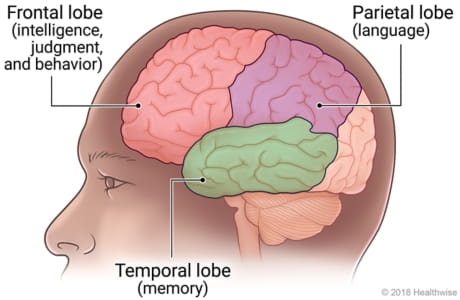Memory loss is a classic early symptom of dementia, but that is not usually the case for frontotemporal dementia, also known as FTD
Instead, hallmarks of this progressive type of dementia, especially in early stages, include personality and behavioral changes or language difficulty.
Also, it tends to occur at a younger age than other forms of dementia, with onset being between 40 and 65 years of age.

This can make identifying frontotemporal dementia very difficult. Often this type of dementia is misdiagnosed as a psychiatric problem because of its early onset. Other times it might be misdiagnosed as Alzheimer’s disease.
Fortunately, the Memory Disorders Clinic at The Ohio State University has been at the forefront of diagnosing various types of dementia for decades. We also currently have clinical trials specifically looking at those with frontotemporal dementia, giving people with the disorder access to the latest diagnostic measures, treatments and therapies.
Where you go dementia care matters. Here at the Ohio State Wexner Medical Center, our dementia specialists will help you and your family diagnose what is causing your symptoms, ways to slow progression and offer support to caregivers.
What is frontotemporal dementia?
Frontotemporal dementia, as its name suggests, occurs when neurons in the frontal (emotions, judgement, impulse) or temporal lobes (language, verbal memory) of the brain become damaged.
The Alzheimer’s Association estimates roughly 50,000 to 60,000 people in the United States live with FTD.
There are several different types of frontotemporal dementia conditions, and the disorders are characterized by early personality changes with impairments in decision-making, problem-solving and judgment. Alternatively, language skills can also be affected, and a person might develop aphasia, or the loss of your ability to understand or express speech.
Memory impairments are not as prominent as in Alzheimer’s disease and usually appear as FTD enters later stages.
Types of frontotemporal dementia
There are three main types of frontotemporal dementia. They include:
- Behavior variant frontotemporal dementia (bvFTD) – This is the most common form. Nerve damage typically occurs in the parts of the brain that control personality, judgement, empathy, obsessive or compulsive behaviors, impulsivity, foresight, among other symptoms related to behavior.
- Primary progressive aphasia – You may lose your ability to understand and formulate sentences when speaking and in others, your speech is labored with short sentences and poor grammar.
- Movement disorders – A few rare movement disorders can be associated with FTD.
Symptoms of frontotemporal dementia
Symptoms of frontotemporal dementia typically involve personality and behavior changes.
The disease is progressive, meaning that symptoms get worse over time.
Depending on the type of FTD, symptoms can include:
- Increasingly inappropriate social behavior, such as making obscene comments or dressing inappropriately for certain settings
- Loss of empathy
- Lack of judgement or problem-solving skills
- Apathy toward hobbies or interests the individual once loved
- Personality changes, such as a cautious person suddenly becoming compulsive
- Changes in eating habits or eating or putting inedible objects in their mouth
- Decline in personal hygiene
- Memory loss
- Motor-related problems
- Increasing difficulty in understanding written and spoken language
- Trouble naming objects and difficulties with expression of thoughts
Diagnosing frontotemporal dementia
Our dementia specialists at the Ohio State Wexner Medical Center will use some of the same tools they use to diagnose Alzheimer’s disease and other memory disorders to identify whether you have FTD or not.
There is no single test for the disorder, but we’ll use various tests to exclude other causes.
Those screening and diagnostic techniques include:
- Mental status testing, including the Self-Administered Gerocognitive Exam (SAGE), which was developed at Ohio State
- Neuropsychiatric and neuropsychological assessment
- Blood and other laboratory tests
- Imaging studies providing detailed images of the brain to help rule out other conditions with similar symptoms, including computed tomography (CT); magnetic resonance imaging (MRI); positron emission tomography (PET) scan, including amyloid PET and fludeoxyglucose (FDG) PET, a technique that enables us to diagnose degeneration in the brain
- Physical exam
- Medical history
- Interviews with patient and family members
- Sleep study
- Genetic testing
Treating frontotemporal dementia
Currently, there is no cure for frontotemporal dementia and since it’s progressive in nature, symptoms will get worse.
However, our dementia experts can prescribe medications that might slow that progression and treat some symptoms you’re having. For example, antidepressants and antipsychotics can work for behavior issues.
Because we’re an academic medical center, we’re also studying how certain medications might impact agitation and apathy in people with FTD, so you’ll have access to the latest treatments.
Beyond medications, we’ll treat your condition with a multidisciplinary approach in our specialized young onset dementia clinic, meaning we’ll offer physical, occupational and speech therapies, social workers and mental health professionals to help you and your family manage symptoms of your disease.
